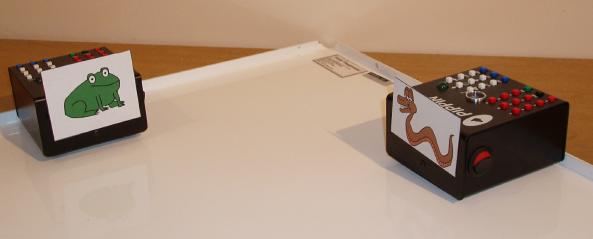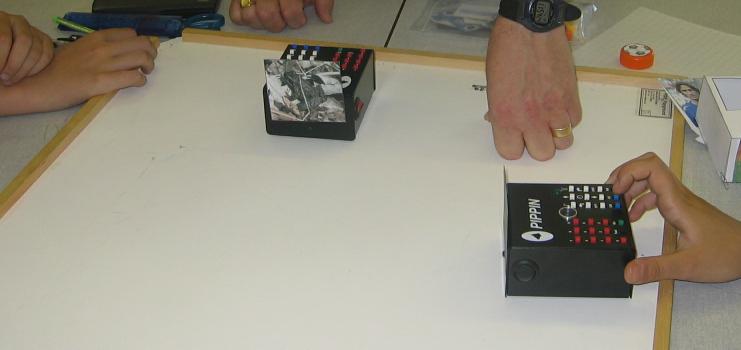
This application started life as "British Bulldog" but I was advised that lots of schools are trying to stamp this out on safety grounds. "Crossing the swamp" is a more politically correct version that adds lots of learning opportunities.
You need two of our robots. They can be PIXIEs or PIPPINs or even one of each. You also need a defined playing area. Our PIXIE Playground is ideal.
One robot has to travel across the swamp without colliding with the other one. Call this one "prey". The second robot has to make the interception. Call this one "predator".

The predator player has to put a program into their robot and place it on the playground touching one of the long edges. They are allowed to take precautions against the other player seeing their program. Once placed, all that this player is allowed to do is press the Go button.
The prey player can now enter their program and place their robot anywhere along a short edge of the playground. Both players must then press and release Go simultaneously. If the robots touch, the predator has won. If the prey reaches the other side of the playground, it has won. Repeat as needed.
This activity will encourage the students to make complex programs to their own design. If a student is sufficiently mathematical they may work out an optimum strategy for the predator. ( I haven't yet but I have a reasonable idea how it should be done.) However, if the prey guesses that this optimum strategy is being used, they can change to a strategy that avoids it.
There is a wide range of possible prey and predators. Frog and snake are obvious. The snake can be replaced with a heron. They could be mouse and weasel. Trout and otter could be very photogenic. I have used "proper" photos taken off the internet or also the "comedy" versions shown above that a friend of mine drew. The frog is here and the snake is here. For PIXIE there are frog and snake covers included in Teachers Notes Volume 1.

Apart from the control and obvious ecological content, this application has implications for games theory in mathematics.
Copyright © 2006-7 Swallow Systems